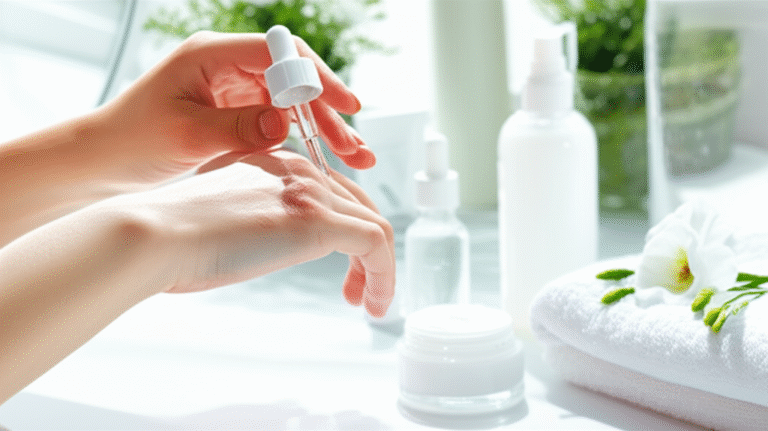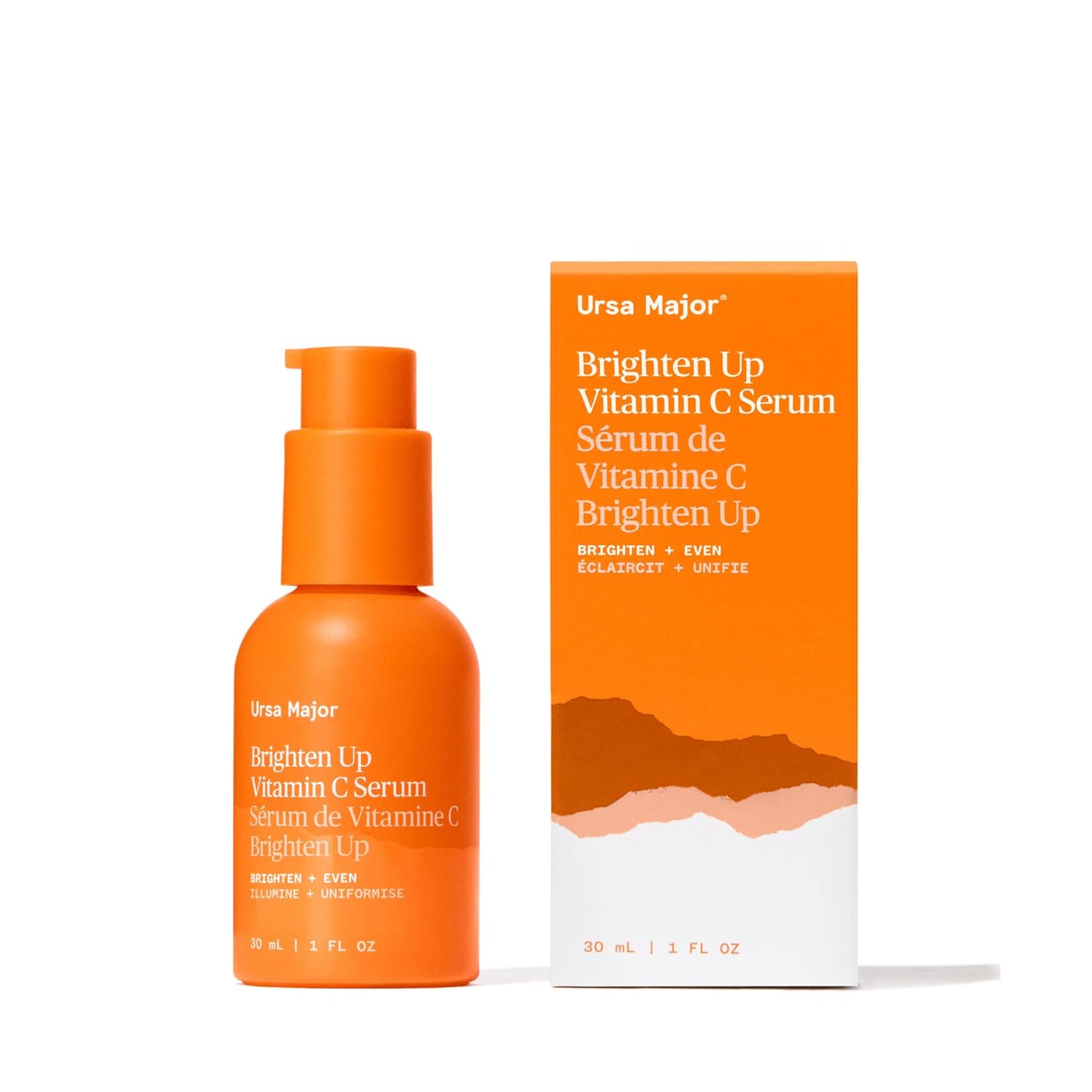Hypoallergenic skin care uses gentle, proven ingredients to minimize irritation and deliver visible, soothing results for sensitive skin. Discover how to choose the best products for happy, glowing skin!
Finding skincare that loves your skin can feel like a treasure hunt, especially if your skin gets easily red, itchy, or bumpy. It’s frustrating when products meant to help end up making things worse! But guess what? Achieving calm, clear, and wonderfully radiant skin is totally within reach. We’re going to break down exactly what “hypoallergenic” means and how to build a simple, effective routine that brings you gentle results. Get ready to discover skincare that truly cares for you!
What Does “Hypoallergenic” Really Mean for Your Skin?

Let’s clear up any confusion! When we talk about “hypoallergenic skin care,” we’re talking about products formulated to be less likely to cause allergic reactions. This basically means they’re made with fewer ingredients that are known common irritants or allergens. Think of it as skincare with a gentler touch, designed to hug your skin rather than challenge it. It’s not a guarantee that no one will ever react, because everyone’s skin is unique, but it’s a fantastic starting point for anyone with sensitive skin concerns. The goal is to support your skin’s natural barrier and promote a calm, happy complexion.
Why Choose Hypoallergenic Skin Care?
If your skin throws a fit (redness, itching, breakouts) after trying new products, hypoallergenic options are your new best friends. These carefully crafted formulas aim to reduce the risk of triggering those unwelcome reactions. This means your skin can focus on what it does best: looking healthy, feeling comfortable, and glowing! It’s ideal for those who:
- Experience frequent redness or irritation.
- Have conditions like eczema or rosacea.
- Are prone to acne or sensitivities.
- Simply want to pamper their skin with extra care.
By choosing consciously, you’re helping your skin stay balanced and resilient.
Key Ingredients to Look For (and Avoid!)
Understanding ingredients is a game-changer in your skincare journey. For hypoallergenic care, we want to embrace the gentle and avoid the potential troublemakers.
Gentle Heroes: What to Welcome into Your Routine
These ingredients are known for their soothing and nourishing properties:
- Hyaluronic Acid: A hydration superstar that plumps and moisturizes without heaviness.
- Ceramides: Naturally found in your skin, they help rebuild and maintain the skin’s protective barrier.
- Niacinamide (Vitamin B3): A multi-tasker that calms inflammation, reduces redness, and improves skin texture.
- Oatmeal or Colloidal Oatmeal: Famous for its anti-inflammatory and itch-relieving benefits.
- Centella Asiatica (Cica): Known for its healing and soothing properties, great for calming angry skin.
- Glycerin: A reliable humectant that draws moisture into the skin.
- Squalane: A lightweight, moisturizing oil that mimics your skin’s natural oils.
Potential Pitfalls: Ingredients to Approach with Caution
While not everyone reacts to these, they are more commonly associated with irritation:
- Fragrance (Parfum): This is a huge culprit for sensitive skin. Always look for fragrance-free options.
- Dyes: Unnecessary colorants can sometimes cause reactions.
- Sulfates (like Sodium Lauryl Sulfate/SLS): Can be stripping and dry out the skin’s natural oils.
- Alcohol (denatured, SD alcohol): Can be drying and irritating, though some types like cetyl alcohol are fatty alcohols and are fine.
- Essential Oils: While lovely, many can be potent and cause irritation for sensitive folks.
- Certain Preservatives: Some parabens or formaldehyde-releasing preservatives can be problematic for some.
It’s always a good idea to check ingredient lists carefully, especially when you’re starting out.
Building Your Gentle Skincare Routine: Step-by-Step
A simple, effective routine is the foundation of healthy skin. Here’s how to build one using hypoallergenic principles:
Step 1: Gentle Cleansing
Your cleanser should remove dirt and impurities without stripping your skin.
- Choose: Look for creamy, lotion-like, or gel cleansers labeled “fragrance-free,” “for sensitive skin,” or “mild.”
- Avoid: Harsh soaps, foaming cleansers with sulfates, or anything that leaves your skin feeling tight or squeaky clean.
- How to: Use lukewarm water (never hot!), gently massage the cleanser onto your face with clean fingertips, and rinse thoroughly. Pat your skin dry with a soft towel – don’t rub!
Step 2: Soothing Toning (Optional but Beneficial)
A well-formulated toner can help rebalance your skin’s pH and add a layer of hydration.
- Choose: Opt for alcohol-free toners with ingredients like hyaluronic acid, glycerin, or calming botanical extracts.
- Avoid: Toners with alcohol, strong fragrances, or astringent properties.
- How to: Spritz onto your face or apply with a soft cotton pad, gently sweeping across your skin.
Step 3: Targeted Treatment (If Needed)
If you have specific concerns like dryness or mild redness, a gentle serum can help.
- Choose: Serums with niacinamide, hyaluronic acid, or ceramides are excellent. Look for formulas designed for sensitive or redness-prone skin.
- Avoid: Highly concentrated actives initially (like very high percentages of Vitamin C or Retinol) without patch testing and professional advice.
- How to: Apply a few drops to your fingertips and gently press into your skin.
Step 4: Nourishing Moisturizer
Moisture is key to a healthy skin barrier.
- Choose: Look for moisturizers labeled “fragrance-free,” “hypoallergenic,” or “dermatologist-tested for sensitive skin.” Ingredients like ceramides, squalane, and hyaluronic acid are wonderful.
- Avoid: Heavy fragrances, alcohol, and comedogenic (pore-clogging) oils.
- How to: Apply a pea-sized amount to your face and neck, gently massaging it in.
Step 5: Sun Protection (Non-Negotiable!)
Sunscreen is your skin’s best protector against premature aging and damage.
- Choose: Mineral sunscreens containing zinc oxide and titanium dioxide are generally better tolerated by sensitive skin. Look for SPF 30 or higher.
- Avoid: Often, chemical sunscreens with ingredients like oxybenzone or avobenzone can be more irritating for very sensitive skin, though formulations vary.
- How to: Apply generously as the last step in your morning routine.
Patch Testing: Your Secret Weapon for New Products
Before slathering a new product all over your face, give it a small test run! This is crucial for hypoallergenic skincare.
- Choose a small, discreet area: The skin behind your ear or on your inner forearm is perfect.
- Apply a small amount of product: Just a dab will do.
- Wait 24-48 hours: Keep the area clean and dry during this time.
- Check for reactions: Look for any redness, itching, burning, or bumps.
If you don’t experience a reaction, it’s likely safe to try on your face. Even with hypoallergenic products, a patch test is always a smart move to confirm tolerance for your specific skin. According to the American Academy of Dermatology, maintaining a healthy skin barrier is key to overall skin health.
Decoding Labels: More Than Just a Buzzword
The term “hypoallergenic” can sometimes feel like marketing jargon, but it does have some grounding.
| Label Claim | What it Generally Means | What to Look For |
|---|---|---|
| Hypoallergenic | Formulated to be less likely to cause allergic reactions. | Minimal common irritants, fragrances, dyes. Check ingredient lists. |
| Fragrance-Free | Contains no added fragrance ingredients. | Look for “fragrance-free” explicitly. Be aware that some natural extracts can still be sensitizing even if un-fragranced. |
| Dermatologist-Tested / Dermatologist-Approved | Products that have been tested on humans, reviewed by dermatologists. | This is a good sign, but doesn’t guarantee everyone will tolerate it. Prioritize alongside other sensitive skin claims. |
| Non-Comedogenic | Formulated not to clog pores, which can help prevent acne. | Ideal for acne-prone or oily sensitive skin. |
| For Sensitive Skin | Products specifically formulated with sensitive skin in mind. | Often a good indicator, but check ingredients for any personal triggers. |
Remember, “natural” doesn’t always mean gentle! Some natural ingredients, like certain essential oils, can be quite potent and irritating. Always prioritize the ingredient list.
Common Sensitive Skin Concerns and Hypoallergenic Solutions
Let’s tackle some frequent issues folks with sensitive skin face and how gentle products can help:
Redness and Rosacea
If your skin flares up easily with visible redness, consider formulas rich in calming ingredients.
- Beneficial Ingredients: Niacinamide, Centella Asiatica (Cica), green tea extract, licorice root extract, cool compresses.
- Product Types: Gentle cream cleansers, lightweight soothing lotions, mineral sunscreens.
Dryness and Itchiness
When your skin feels tight and scratchy, hydration and barrier support are key.
- Beneficial Ingredients: Ceramides, hyaluronic acid, squalane, colloidal oatmeal, shea butter (in moderation if prone to breakouts).
- Product Types: Creamy cleansers, hydrating toners, rich but non-greasy moisturizers, balms for very dry patches.
Eczema (Atopic Dermatitis)
Eczema requires extra gentle care to soothe inflammation and restore the skin barrier.
- Beneficial Ingredients: Colloidal oatmeal, ceramides, emollients. Always consult with a dermatologist for severe eczema.
- Product Types: Fragrance-free, soap-free cleansers and moisturizers specifically formulated for eczema-prone skin. Avoid anything with high alcohol content or strong fragrances.
According to the National Eczema Association, sticking to a routine with gentle, moisturizing products is vital.
Acne-Prone Sensitive Skin
It’s possible to have both! The trick is to be gentle while addressing breakouts.
- Beneficial Ingredients: Salicylic acid (in low concentrations for sensitive skin), niacinamide, benzoyl peroxide (use cautiously and start low), gentle exfoliants like PHA’s.
- Product Types: Foaming cleansers (non-stripping), lightweight oil-free moisturizers, spot treatments that don’t over-dry.
- Tip: Introduce acne-fighting ingredients one at a time to see how your skin reacts.
Tips for a Glowing, Sensitive Skin Makeover
Beyond products, lifestyle plays a role!
- Stay Hydrated: Drinking plenty of water keeps your skin plump from the inside out.
- Manage Stress: Stress can trigger skin flare-ups. Find healthy ways to de-stress like yoga or meditation.
- Eat Nourishing Foods: A diet rich in antioxidants (fruits, vegetables) supports overall skin health.
- Get Enough Sleep: Your skin repairs itself overnight. Aim for 7-9 hours.
- Shield from the Elements: Protect your skin from harsh wind and extreme temperatures.
- Don’t Over-Exfoliate: While exfoliation is good, too much can damage your skin barrier. Stick to 1-3 times a week max, depending on the product and your skin’s tolerance.
Frequently Asked Questions About Hypoallergenic Skin Care
Q1: Can “hypoallergenic” skincare really prevent all reactions?
No, it’s designed to minimize the likelihood of allergic reactions by using gentler ingredients. Everyone’s skin is unique, so what works for one person might not for another. Patch testing is always recommended!
Q2: What’s the difference between “hypoallergenic” and “fragrance-free”?
“Fragrance-free” means no artificial or added scents. “Hypoallergenic” is a broader claim, indicating the product is formulated to be less likely to cause an allergic reaction, which often means it’s fragrance-free but also avoids other common irritants.
Q3: Is hypoallergenic skincare good for oily or acne-prone skin?
Yes! Sensitive skin isn’t limited to dry or redness-prone types. Many hypoallergenic products are formulated to be lightweight, non-comedogenic, and still address concerns like oiliness or breakouts without causing irritation.
Q4: Can I use active ingredients like retinol or Vitamin C with sensitive skin?
Yes, but you must introduce them very slowly and carefully! Start with lower concentrations, use them less frequently (e.g., once or twice a week), and always ensure your skin is well-moisturized. Never layer multiple strong actives at once when your skin is sensitive.
Q5: Are natural ingredients always better for sensitive skin?
Not necessarily. While many natural ingredients are fantastic, some can be highly potent and cause irritation (like certain essential oils). It’s more about the specific ingredient and its concentration than whether it’s “natural” or “synthetic.” Always check the ingredient list!
Q6: How often should I cleanse my face if I have sensitive skin?
Most people benefit from cleansing twice a day: once in the morning to remove any overnight buildup, and once in the evening to remove makeup, sunscreen, and impurities from the day. Gentle cleansing is key!
Conclusion: Your Journey to Comfortable, Radiant Skin
Embracing hypoallergenic skincare is a wonderful way to nurture your skin, reduce irritation, and reveal its natural radiance. By understanding what to look for, building a simple yet effective routine, and always listening to your skin’s needs, you’re well on your way to a complexion that not only looks good but feels incredibly comfortable. Remember that consistency and patience are your greatest allies. With the right gentle care, you can absolutely achieve that healthy, glowing skin you desire. Here’s to happy, serene skin days ahead!



